Review by Arman Zarmehr
After a long wait, the highly anticipated game Stellar Blade has finally hit the market. Today, we want to see if it has managed to deliver a worthy experience or not.
From its initial presentation, Stellar Blade has demonstrated well that besides its appearance, it has some things to say in terms of its technical and structural gameplay discussions, in a way that it combines two different genres in the combat aspect and extracts a very interesting formula from it. This work also clearly intends to emulate many of the hack-and-slash genre games, but the question arises whether this work has managed to create an independent identity for itself as a unified experience in this genre, or it is merely following blindly in the footsteps of great and well-known works.
Through this critique and examination, we will scrutinize various aspects of this work and by analyzing them, we will ultimately arrive at an answer to this question.
When Angels Fall from the Sky
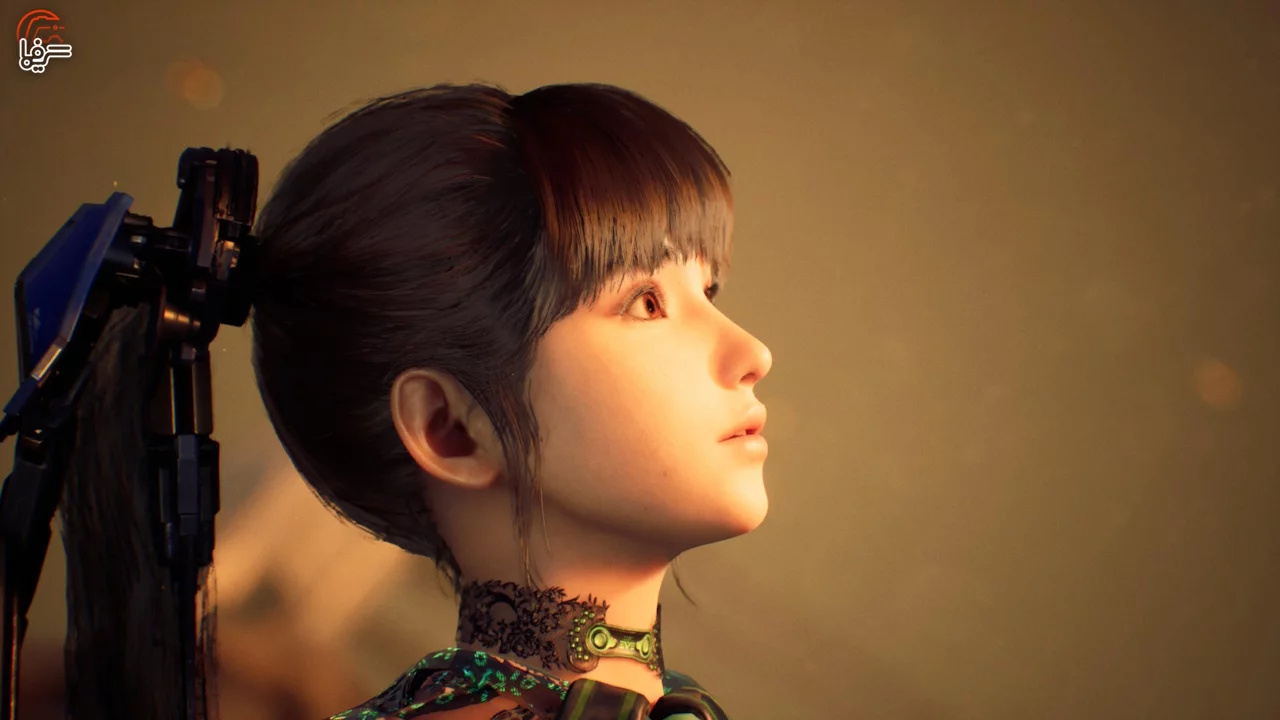
The story of Stellar Blade portrays the human race on the brink of extinction; a time when, during a long war between them and creatures called Naytibas, the majority of Earth’s population has been wiped out, and the survivors are driven off the planet to colonies in space for refuge. Now, Earth has become a post-apocalyptic world teeming with monsters that now reign over the planet; you play as Eve, a member of the 7th Airborne Squad, who along with other members of this group, is sent to Earth to eliminate the threat of the Naytibas.
As the name of this group suggests, this is the seventh attempt to reclaim a world taken from humans years ago, indicating that the six previous teams weren’t quite successful in their mission, and now Eve and her group face a very difficult task ahead. As expected, the team’s entry into Earth is met with strong resistance from the resident monsters. Almost all members of this team are killed, but just before Eve is about to be killed by an Elder Naytiba, she is rescued by a person named Adam and manages to escape.
Following this event, Eve, now the last survivor of her team, teams up with Adam to make their way to a location where it is expected to have an Alpha Naytiba presence. They go to eliminate it, and after defeating this powerful enemy, they find a member of the 5th Airborne Squad named Lily, who had been imprisoned in her own pod for years. When Lily becomes acquainted with Eve and Adam and understands the situation, she decides to stand alongside Eve as a support engineer and help her fulfill her mission, thus forming the main group of our story.
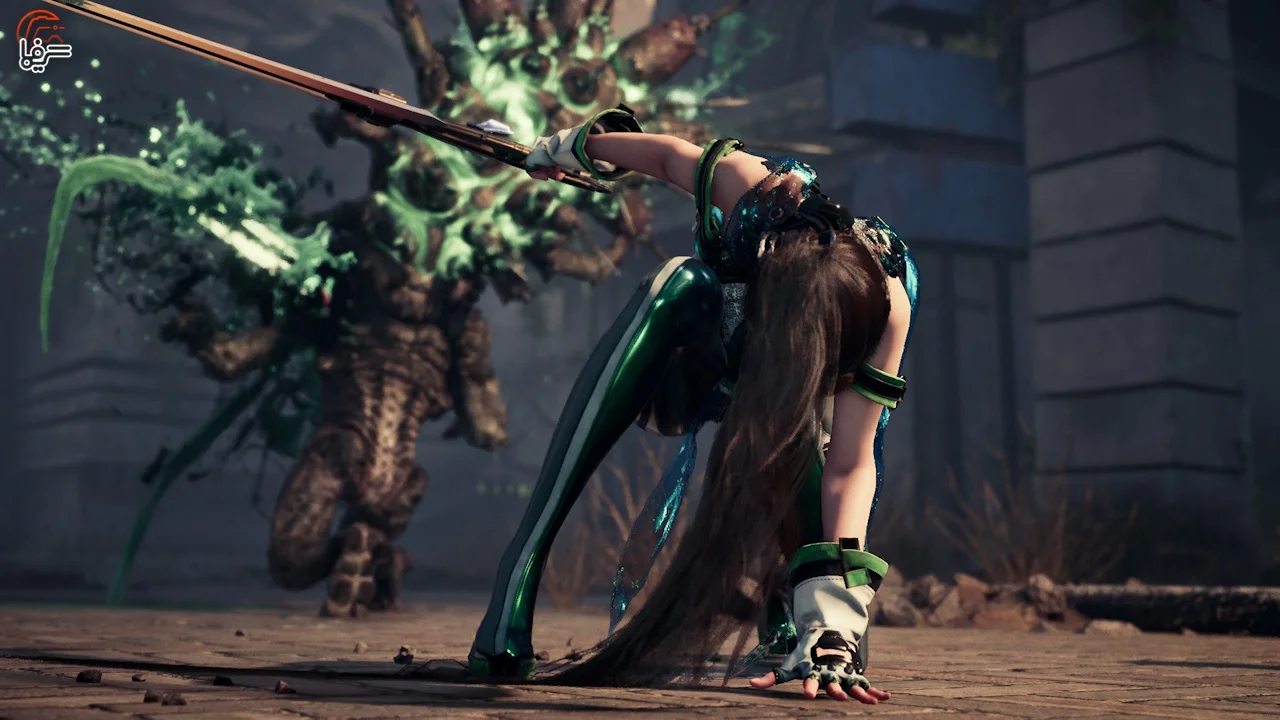
Then, Adam takes them to the city of Xion; the last remaining city on Earth where humans live. Here, Eve and the leader of this group named Orcal become acquainted and agree that if Eve helps them in revitalizing the city, they will also assist her in fighting the Naytibas. In this regard, Eve must retrieve four different cores from four powerful Naytibas, and along this path, more issues regarding how these creatures came into existence and the destruction of Earth will be revealed.
Now that we’ve had an overview of the storyline, it’s better to discuss how it performs in detail; unfortunately, I must say that the story section of Stellar Blade has been the weakest part of this experience, and there are many reasons to support this issue. The game’s story had a very engaging and flashy start and depicted an idea with great potential for depth, but unfortunately, the game almost until the end cannot come close to that potential, and even in the final hours, it doesn’t necessarily utilize it as a whole.
Before anything else, let’s talk about the characters; it can almost be said that Stellar Blade doesn’t have any character that, apart from the visual aspect, can be memorable. Eve is a severely dry and one-dimensional character, and Adam is so tedious and tiresome that, to be honest, I forgot his name on the second day of the experience! Among the three main characters of the game with whom you spend the most time, only Lily can be somewhat more enduring and appealing. Throughout the experience, while the game tries to depict these two characters as “companions” and “allies” to Eve, they almost never directly follow you at any point in the game!
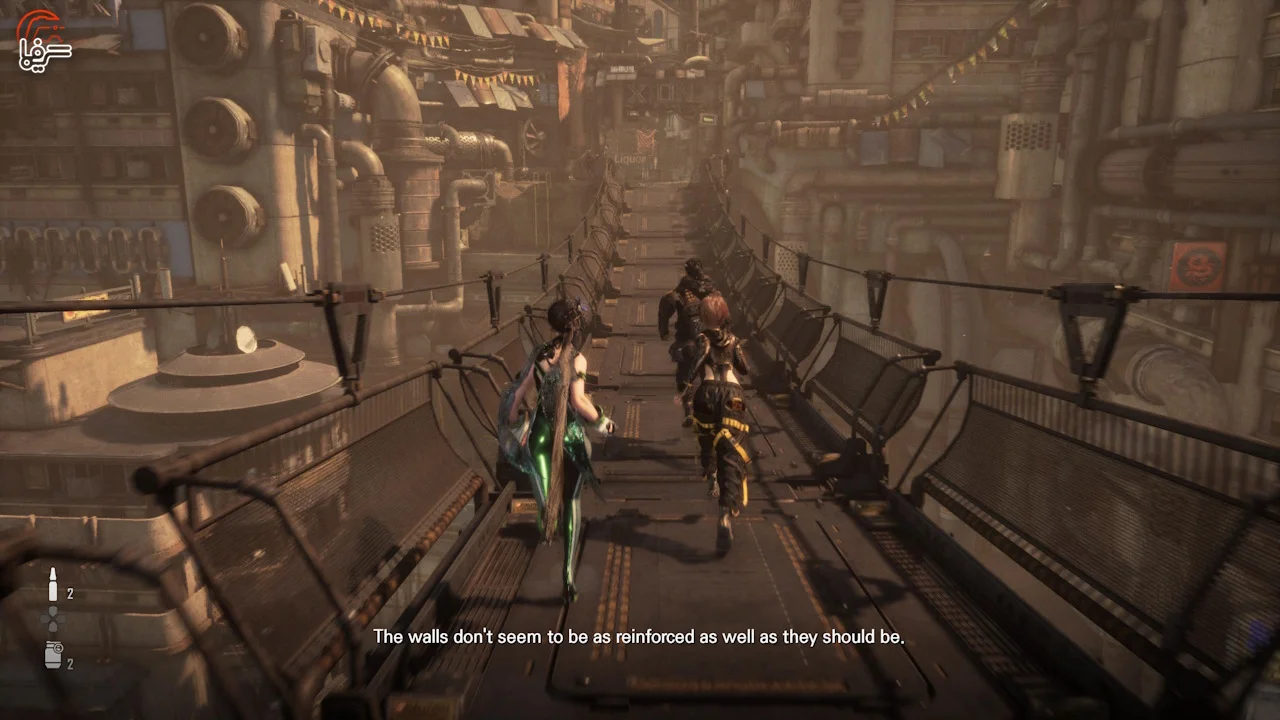
Throughout most of the levels, Lily and Adam only communicate with you through a Drone, and even that connection is marred by cliché dialogues. The game tries hard to bring an interesting relationship between the two characters Adam and Lily, but ultimately their bickering feels more forced than anything else and doesn’t come off as natural or engaging.
Apart from the three main characters, you encounter many other characters during the game who officially have nothing to offer except a few lines of dialogue, so outside of these three characters, neither in the side levels nor in the main levels do you necessarily encounter charismatic characters. On the other hand, the game suffers from many suspension issues, so much so that after that sudden start, the storytelling tempo becomes tempestuous, and due to weak character development and uninteresting dialogues, it can boldly be said that the game loses its narrative power for several hours and progresses very dryly.
From the halfway point onwards, storytelling somewhat picks up again, and some twists occur that, despite being predictable, are generally interesting, but still due to insufficient nurturing and processing, many “emotional” moments of the game appear very weak. In some parts of the game’s story, it tries very visibly to depict an emotional scene, but due to lack of sufficient attention, no feeling is received from these scenes.
Overall, the story and narration of Stellar Blade suffer from lack of identity and depth, and there’s almost no room for redemption for these issues. The game’s antagonist is like a blank piece of paper that shows no flexibility at any point in the game and his connection with the people who are “very important to him” is extremely artificial. The game asks you to believe that these characters have a strong connection with each other without necessarily showing you the formation of this connection and making it believable; therefore, due to the lack of any depth, it’s very difficult to establish a special connection not only with the game characters but also with the overall story goal.
Souls-like: Hack and Slash Style
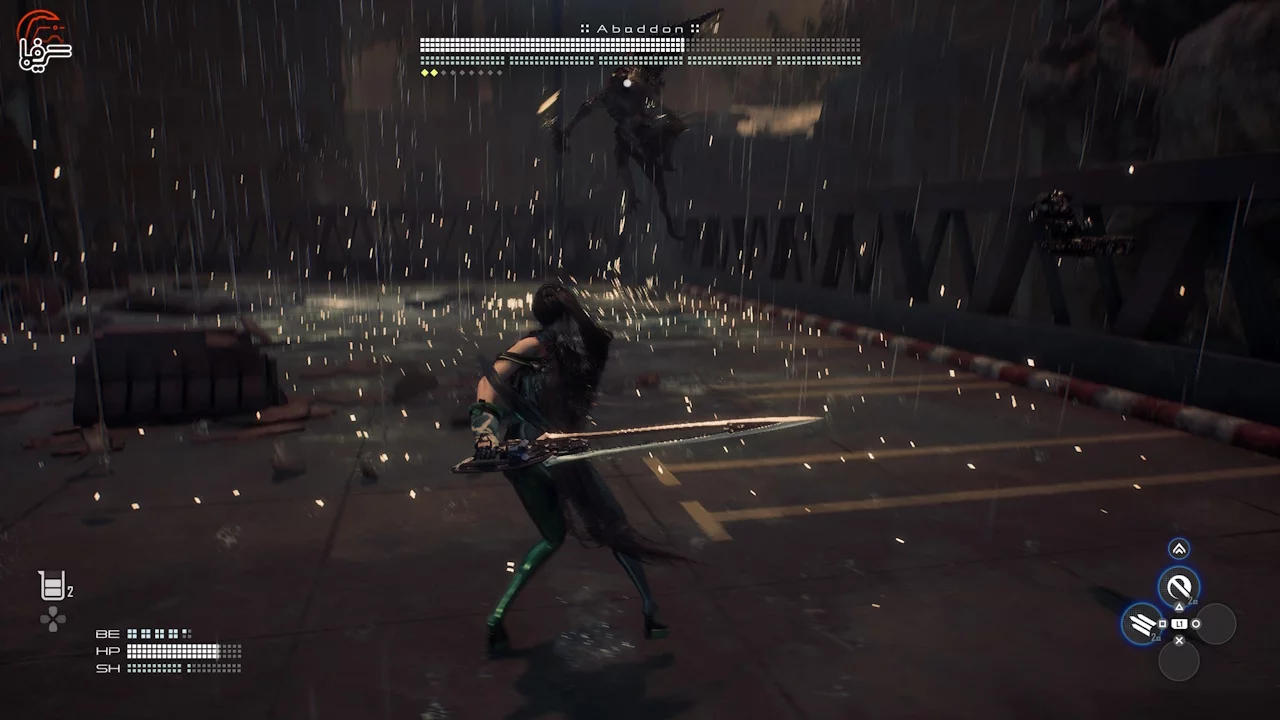
But now that we’ve passed the narrative section, it’s time to talk about the highlight of the game experience, which is its gameplay and combat system, which I believe are implemented with great finesse and are full of identity and innovative independence, although it’s clearly evident that this game has drawn inspiration from works like Nier Automata. If you’ve seen various demonstrations of this game and its gameplay, you may feel that the combat is faster-paced than a typical Souls-like game but slower than a traditional hack-and-slash experience, and the reason for this is that the game operates in a narrow line between these two genres.
We are faced with a very deep combat system that constantly introduces new mechanisms, twists, and features to make the combat process deeper, more engaging, and more exciting throughout the experience, to the extent that it easily compensates for the narrative shortcomings and carries a significant weight of this experience on its shoulders. It’s so highly flexible that it never becomes monotonous or tiresome!
But what is the structure of the combat system? We’re dealing with a hybrid and dual structure that incorporates different elements from both the Souls-like and hack-and-slash genres; on one side, we have a combat process that requires thinking, timing, and strategic planning, and you always have to assess situations and show optimal reactions because sometimes one mistake can cost you dearly. Unlike typical hack-and-slash works, the game doesn’t encourage you to adopt an aggressive approach; instead, it requires you to evaluate your opponent and play patiently.
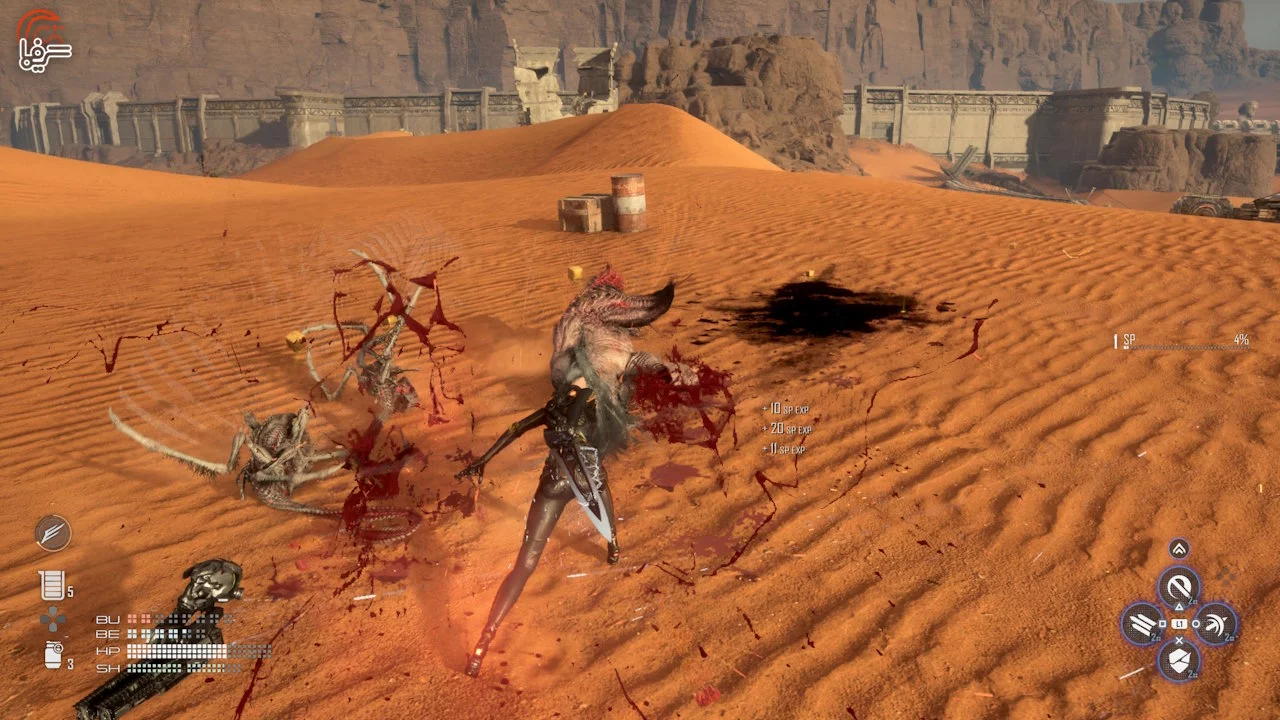
On the other hand, this work provides you with various defensive and offensive capabilities, allowing you to take control of the combat rhythm, increase its speed and tempo, and does an exceptional job in presenting these capabilities or, so to speak, their presentation. When you combine these capabilities with the strategic combat process, you suddenly find yourself in a dynamic that benefits from the brain of a Souls-like and the arm of a hack-and-slash!
Eve possesses a power called Beta Energy that allows you to use various skills during combat. It’s worth mentioning that the amount of Beta energy is limited and, once depleted, you can regain it by engaging in combat and parrying. The game also focuses heavily on diverse combos and constantly encourages you to use them. Therefore, we are faced with a wide range of tools that make combo creation, optimization, and response to different situations much more enjoyable.
Furthermore, to further enhance these diverse capabilities, the game offers five different skill trees with their own unique focuses. Two of them are unlocked during the experience, and the other three are available from the beginning. The default three are Survival, Attack, and Beta, and each name clearly indicates the capabilities they offer.
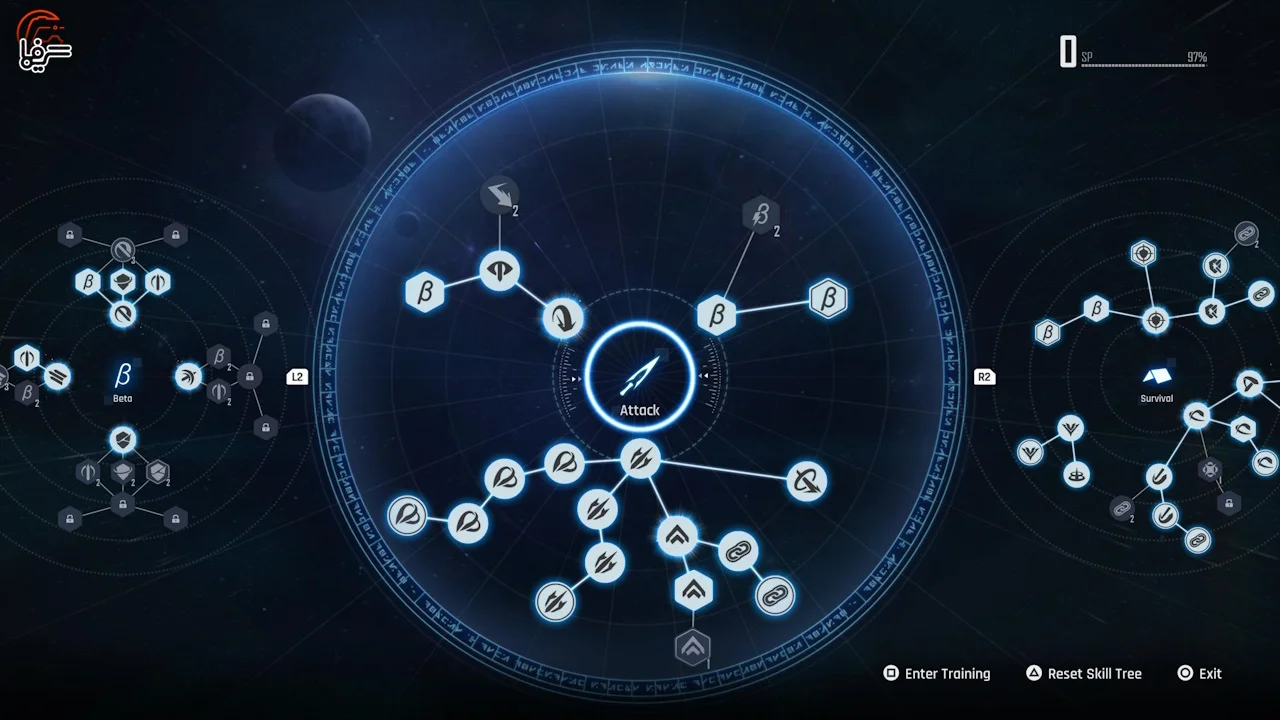
Since we’re witnessing limited role-playing elements in this game, the way Skill Points are obtained directly relates to these elements. You gain SP directly through combat and receive a certain amount of them for use in the skill tree. The fourth skill tree is named Burst and corresponds to an ability with the same name, which functions similarly to Beta but often has more aggressive moves, requires more power, and of course, comes with different animations and presentation styles.
It’s worth mentioning that the existence of five skill trees doesn’t imply clutter or the presence of unused skills. Each of these skill trees is purposeful and significantly influences the combat process. In addition to Eve’s unique sword, we also have access to a firearm with its own upgrade menu. It can greatly assist you during battles and can even be directly linked to some of your combos for maximum efficiency! This firearm also has several types of shooting with different ammunitions that you can use according to the situation.
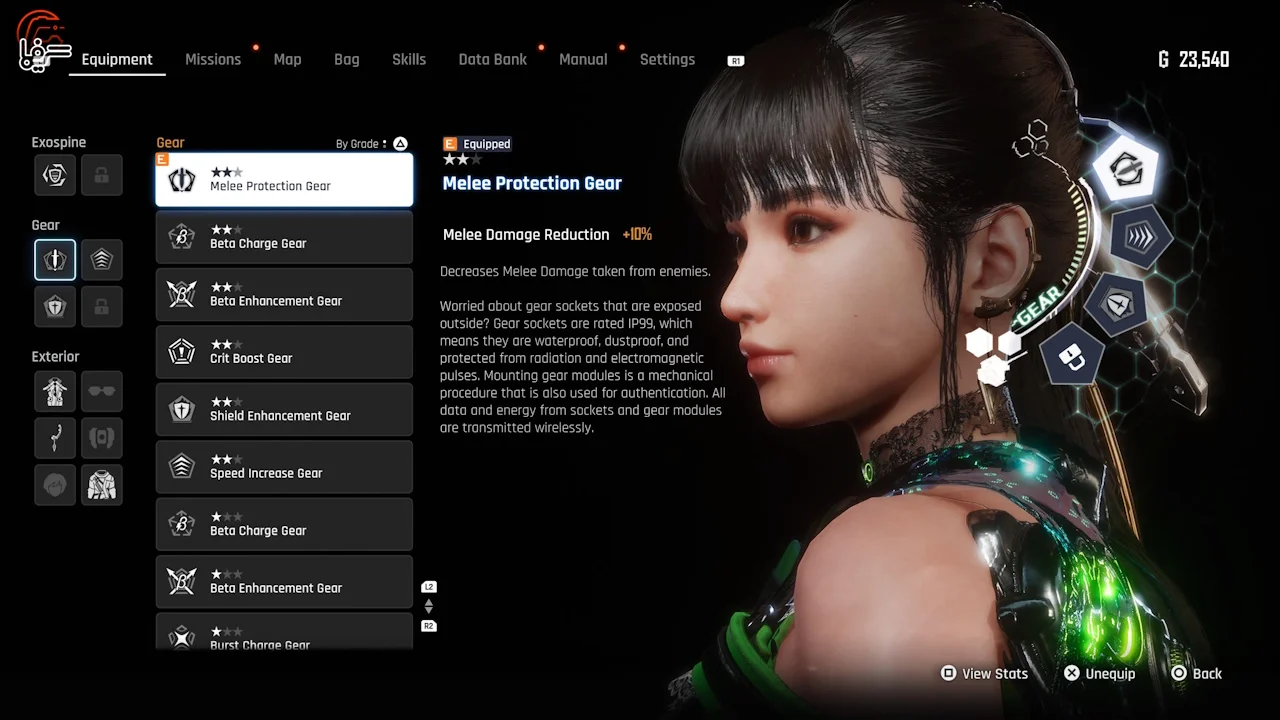
As I mentioned earlier, we encounter limited RPG elements in this game; therefore, you will find numerous items throughout your experience that are used to upgrade Eve and her abilities. With these items, you can create a wide range of Nanosuits for your character and upgrade her various abilities. The game offers two sections, Exospine and Gear, to allocate specific abilities and equip Eve with useful tools, initially leaving only one slot open in each of them.
Each of these sections provides you with a wide range of items with different quality grades, allowing you to determine your overall approach to combat. You can create a highly defensive combination or use items that allow for a more aggressive approach. While the role-playing elements may not be extremely deep, in my opinion, they perform their duty well with the caliber employed, offering players a suitable level of flexibility. Unlike Ubisoft’s works, this game doesn’t bombard you with a fistful of repetitive items, opting for a more minimalist and organized approach to most of its role-playing aspects.
Stellar Blade also adopts a more stringent save approach, similar to Soulslike games, and places camp environments along your path. By activating these camps, you can rest, save your game, upgrade skills and tools, or take advantage of the shop to purchase health items and more.
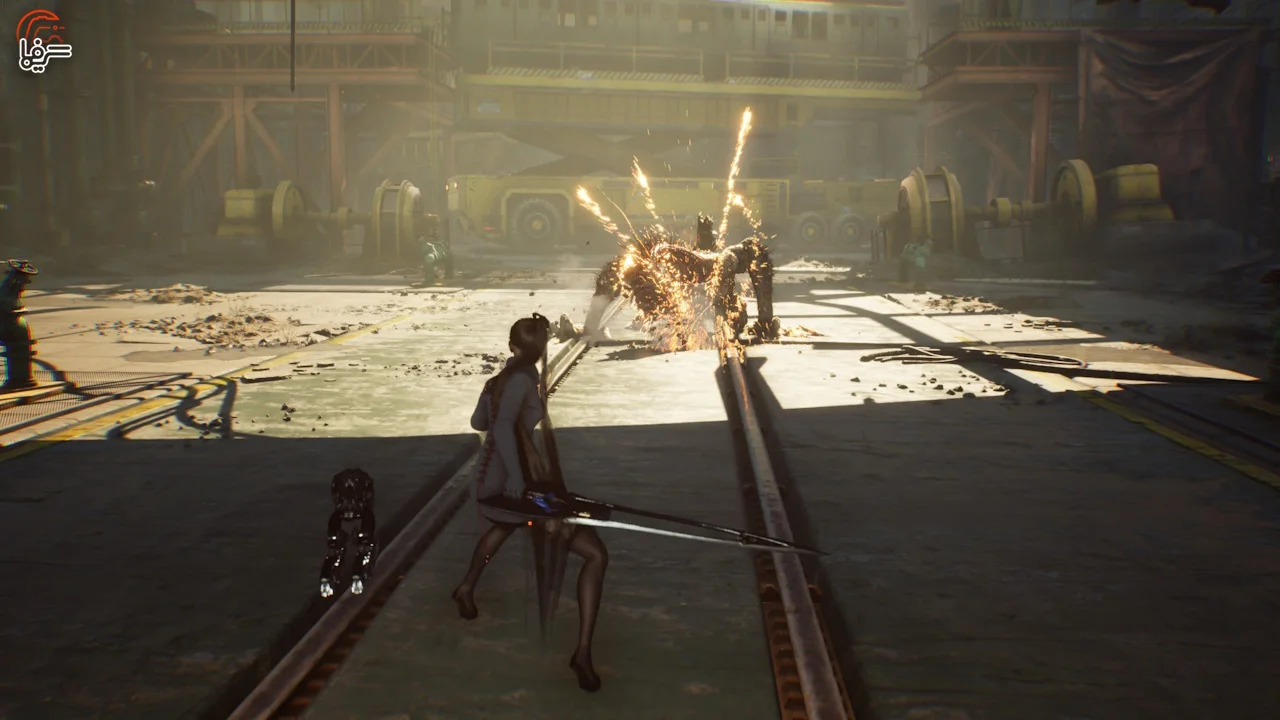
The customization options in this game are also noteworthy; at launch, we have seen over 30 different outfits for the character Eve, which come in various forms and, of course, require crafting using specific required items. In addition to Nanosuits, various other customization items such as glasses, etc., are available for personalizing Eve. Furthermore, after entering Xion and interacting with some characters, and even completing certain side quests, you can access new features such as a salon to change your character’s hairstyle and color. You even have the option to customize the outfits of the two characters Lily and Adam!
The design of enemies in this title is also excellently executed and functionally presents a wide range of challenges along your path. We encounter a large number of different enemies with various abilities, powers, and different combat patterns, each of which can be deadly in its own right. Consequently, they inject different types of combat into the gameplay. The design of boss fights is also one of the golden strengths of this game; they become better and better as you progress through the game, and fighting each of them provides its own special enjoyment due to the high functional diversity and the challenging nature they create.
However, before we move on from the combat system, it’s worth mentioning a bit about the side quests. As you probably know, Stellar Blade is a semi-open-world game, so you encounter multiple side quests throughout.
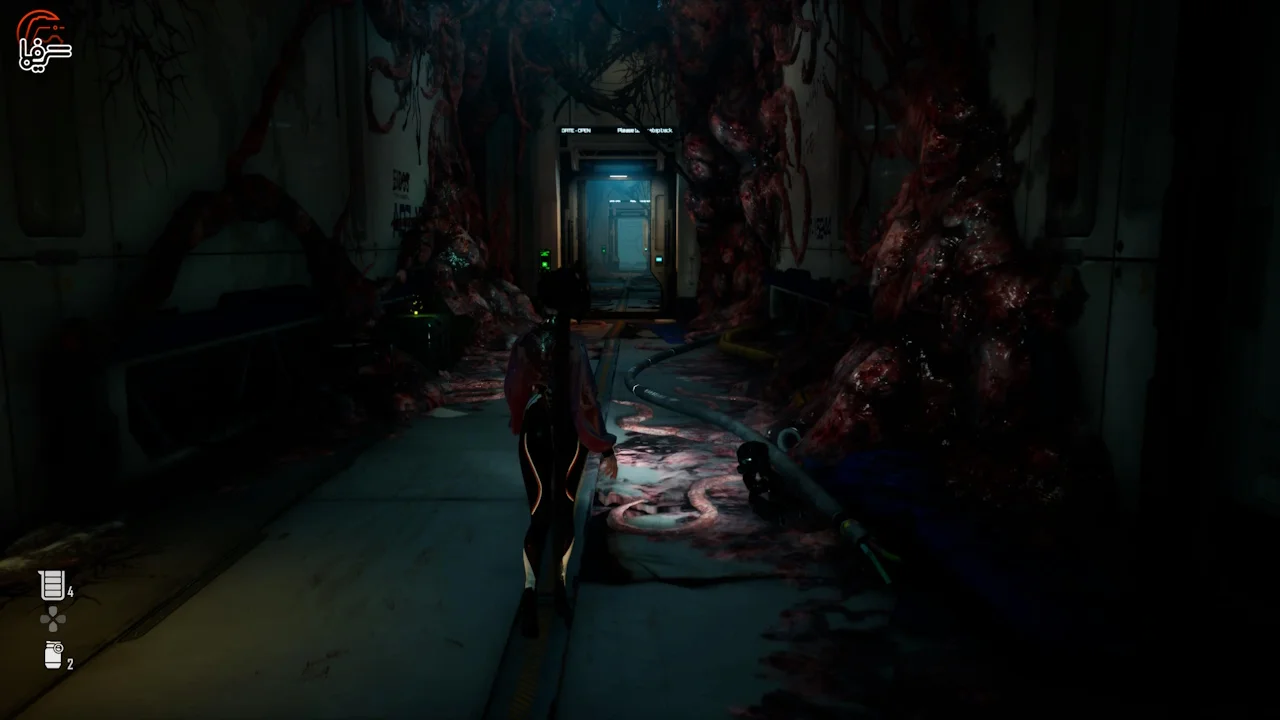
Some of these side quests can indeed provide entirely new capabilities, but most of them are quite superficial. Personally, I found very little reason to allocate time to these side activities, especially when progressing through the latter half of the experience. There’s almost no compelling reason telling you “you must” engage in side activities to become more powerful, as the rewards usually consist of EXP and money, which are not particularly useful at this point in the game.
Furthermore, the objectives of these side quests are not particularly unique or engaging, which reduces the player’s enthusiasm for completing them. However, the main levels excel in diversifying and adding twists to the gameplay. For example, at one point, you enter an underground laboratory where your weapons are unusable, and the game focuses more on environmental manipulation and space creation, which was genuinely intriguing to me.
Therefore, it can be said that Stellar Blade is not necessarily a one-dimensional experience of constant combat and sometimes can add interesting twists to its gameplay, providing diversity and identity. Overall, the gameplay section of this title can easily enhance the overall time required to experience this game and always provide more flexibility to this section by introducing new ways to interact with it.
A Beautiful Post-Apocalyptic World
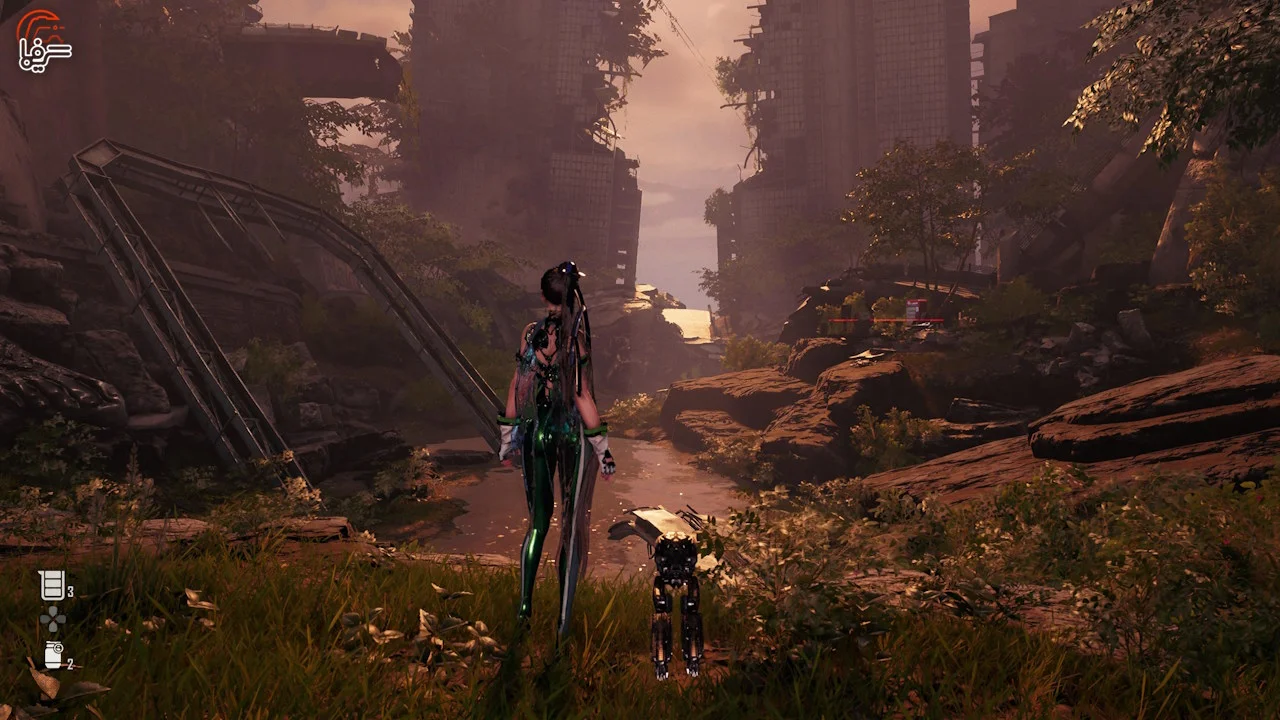
In technical and visual aspects, Stellar Blade performs almost flawlessly. First and foremost, the optimization of this title deserves praise because throughout my experience with the game, I didn’t encounter any frame drops or technical issues even for a moment. This game provides a seamless and cohesive technical experience, which is excellent due to the highly dynamic nature of the gameplay.
In the graphics department, we’re also presented with a visually stunning game that offers a wide variety in environment and level design. As mentioned earlier, Stellar Blade features diverse environments with different approaches to design, injecting a strong visual identity into the game. The character designs also effectively reflect the developers’ artistic visions, and the wide range of outfits directly contributes to this direction.
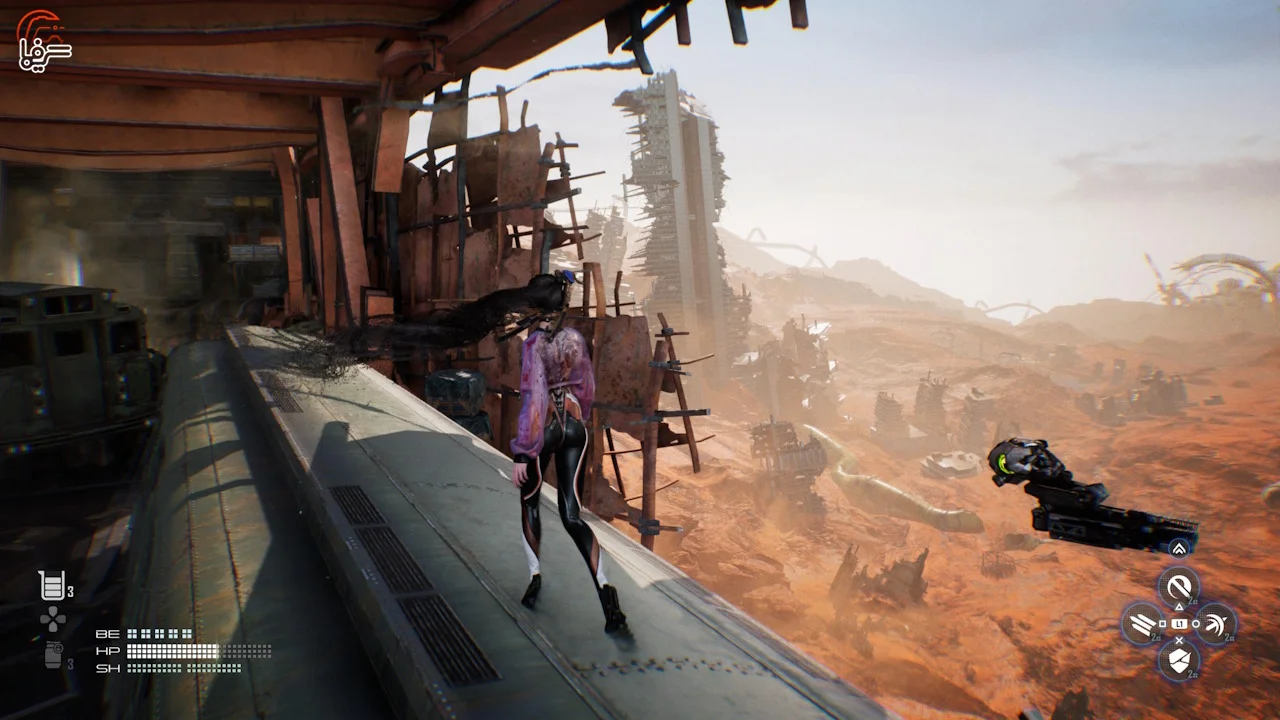
A hack and slash game without great music is meaningless, and fortunately, Stellar Blade doesn’t lack in this department either. It offers an excellent soundtrack that aligns well with the overall identity of the game and injects into the gameplay moment by moment. During battles, you’re confronted with faster-paced tracks, while during exploration or resting in camps, you listen to calm music that complements those activities.
The voice acting for the game characters is acceptable, but the voices for Adam and Eve are somewhat dry. While not necessarily “bad,” they lack emotional depth to a significant extent, which directly relates to the character development issues. Overall, Stellar Blade demonstrates very good performance in its visual and environmental design department, which is well complemented by its soundtrack. However, some character voice acting feels a bit dry and becomes tiresome after a while.
The Verdict
Stellar Blade is a highly commendable title that revolves around creating its own identity as an action-packed hack-and-slash/soulslike game. Its gameplay and combat system offer depth and multiple layers, empowering players to utilize various mechanics and providing a smooth and enjoyable experience in combat scenarios. Engaging level design, diverse enemies and bosses, impactful skill trees, and an excellent soundtrack are characteristics that shoulder much of this game’s weight. However, issues with pacing in storytelling, paper-thin characterizations, and clichéd and not very engaging dialogue sometimes cause this experience to lose its momentum.
Pros:
|
Cons:
|
8.2/10
This game was experienced and reviewed on the PS5.



Comments